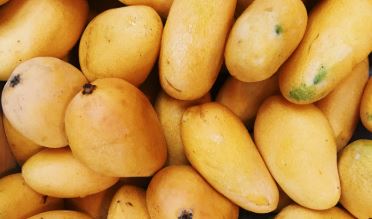The huge golden mounds of mangoes are a delight for the tired summer eyes. Mango is easily the most preferred fruit in our country. One cannot think of summer and does not think of mangoes. Hot humid days become unbearable but for this heavenly fruit.
The scientifically common genus belongs to Mangifera indica, which includes several species of tropical fruiting trees in the flowering plant family Anacardaceae. The mango is indigenous to the Indian subcontinent and Southeast Asia. Cultivated in many tropical regions and widely distributed in the world, mango is one of the most popular exploited fruits for food, juice, flavor, aroma and color. Its leaves are used as floral decorations in weddings and religious ceremonies.
Also read: beauty of Indian Monsoon
Why mango is so popular in India
Mango is a sweet favorite in the length and breadth of our country. Each region has its own favorite and some like Alfonso. Mango is consumed both in its raw and ripe conditions. When raw, the color of the mango is always green and really sour.
No heat is complete without the ritual of consuming raw mangoes. Whether in the form of pieces or the different types of pickles that can be made are amazing. Sweet or salty, spicy or not mango pickles and marmalades are unique. This combination with chickpeas, carrots, lemons, and other such ingredients is amazing. The taste of pickles made in the northern parts of India is very different from the dishes made in the southern parts. The basic difference is that mustard oil is commonly used in the north for pickles while in the south pickles are made into jingle oil.
Raw mango is also used to make hot and spicy chutney and even a sweet-sour camphor called lonoji. In the northern regions of India, raw fruit is used to make mango emerald, which acts as a coolant against the hot dry winds lu, which spreads throughout northern and western India. To make this sweet and sour drink, raw fruits are boiled and its pulp is extracted. With sugar and dried mint leaves, it is the best protection from hot dry winds blowing in the northern regions. Raw mangoes are also an important Indian spice source of amchur. It is grinded and cut into thick pieces which are dried in the sun and then made into powder. It is added to various dishes to give it a delicious taste.
Ripe mangoes come in different parts of yellow, orange and red depending on the regional taste. The fruit is often red and yellow towards the sun where it is shaded. When ripe, the unripe fruit gives a distinctive resinous sweet smell. It has a single flat rectangular seed in its center which may be fibrous or hairy on the surface.
When ripe, mangoes are easily the most delicious fruits around. Its alcoholic aroma is enough to tempt the toughest of them. Ripe mangoes are consumed extensively as they are.
Peel them and dig your teeth into the heavenly flesh of this fruit. Peel them, cut them into chunks and then eat them. Just slice them without peeling and eat the fruit properly with the peel. Feeling too lazy to bite or peel them, no problem. Soften the fruits by squeezing them lightly with your hands. Remove the part where the stalk attaches to the fruit and then suck the pulp of that heavenly fruit directly from the fruit. As they say, "untouched by human hands." Do or eat as you want.
A favorite North Indian method of consuming this fruit is amarus. The fruit is peeled and cut into chickens. The mango pieces are then mixed with a little milk, water and sugar. Voila, it's ready. Generally it is eaten as part of a meal as a dessert. Another hot or should I say cold favorite is Amarkand in which mango puree is mixed with curd and sugar. Many people add rose water, saffron buds, and cardamom powder to both these dishes to enhance their taste.
In many parts of India mangoes are also eaten as fruit peels or mango papad. The ripe mango is cut into thin layers and put together and then lowered. It comes in two varieties: one is a very dry form and the other is slightly more fleshy and juicy.
These are traditional forms of consumption that are still preferred. Today mangoes are consumed in smoothies, ice-creams, and pudding, custard, fruit salad and whatnot. Some creative chefs have also come up with interesting ways to mix them in traditional sweets like kalakand (made from milk that is boiled and thickened for hours).
Mango is not only a delicious fruit, but also a good source of various vitamins and minerals. An excellent overall nutritional source, mango is rich in phytochemicals and a variety of nutrients that make it eligible as a model superfruit. It is not only a rich source of antioxidant vitamins such as A, C and E, but also B vitamins and essential nutrients such as potassium, copper and 17 amino acids. The skin of some varieties is edible and a high source of dietary fiber. Even the seed is used for its medicinal properties.
Even as you enjoy your self with This heavenly fruit thinks of all the vitamins and nutrients it provides. It is indeed a deity in the hot Indian summers. In fact, it also looks forward to an otherwise dreadful summer. Mango is truly the king of fruits.

Comments
Post a Comment